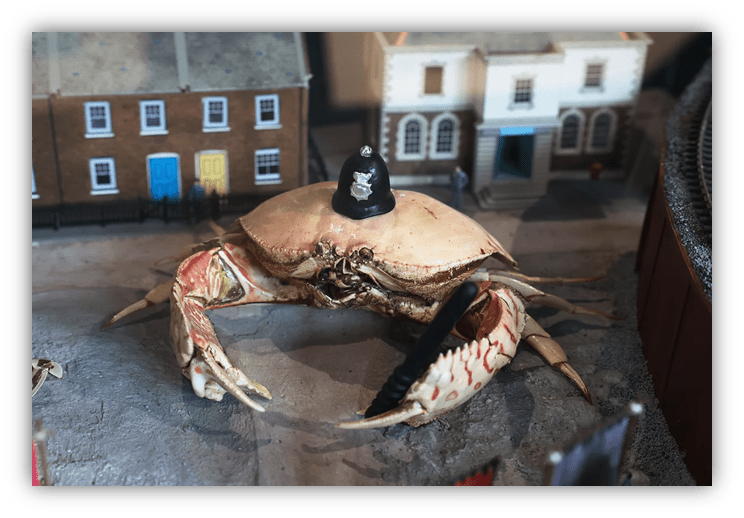History? Britain has plenty of it.

With more available every day.
We’ve got museums aplenty to fit it all in. Some, world renowned institutions:

Ones that are a must see in every guide book and travel website.
Then there are the more niche affairs. The ones that give an insight into the particulars (or is that peculiarities?) of Britain.
Presenting: an alternative must-see guide…

Derwent Pencil Museum
Keswick, Cumbria
The Lake District is one of the UKs gems:

A UNESCO World Heritage Site.
Its lakes and hills have been inspiring artists, writers (most famously Wordsworth ‘wandered lonely as a cloud’ here) and tourists for centuries. Should you get bored of the resplendent scenery or, as frequently happens, it rains, there’s always the Pencil museum.
They’ve been making pencils in the area since 1832 using the locally found graphite.
The big draw is one of the largest colouring pencils in the world at 7.91 metres long.

It used to hold the world record, but you can’t halt progress. You get a quiz to complete as you go round to make sure you’re fully immersed in the Pencil experience.

British Lawnmower Museum
Southport, Merseyside
Did you know that the lawnmower was patented by Edward Beard Budding in 1830?
If you did? Then this is the museum for you. There’s:
- Petrol mowers
- Electric mowers
- Solar powered robot mowers
- Ride on mowers
- Water cooled boiler mowers
- Any kind of mower you can imagine.
Along with some you can’t. Given that I lacked the imagination to conceive of a water cooled boiler mower.
If the history of the lawnmower isn’t sufficient to whet your appetite and you need a bit of glamour, they’ve got that covered too.
Lawnmowers Of The Rich And Famous presents the gardening implements of a range of celebrities.
OK, so they’re mostly personalities that will mean nothing outside these shores (you want to see Hilda Ogden’s Qualcast Panther? You’ve got it.)

But fans of Queen can cast their eyes on Brian May’s mower.
Fans of a different kind of royalty can salute and sing the National Anthem of (the then) Prince Charles and Princess Diana’s grass cutting machine.
Did either of them actually mow the lawn?

I’m not convinced, but at the very least it’s the mower used in the upkeep of their extensive grounds.
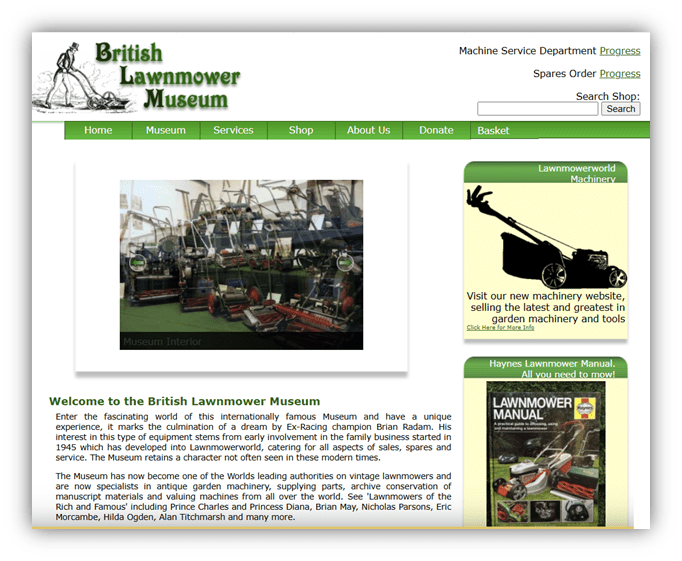
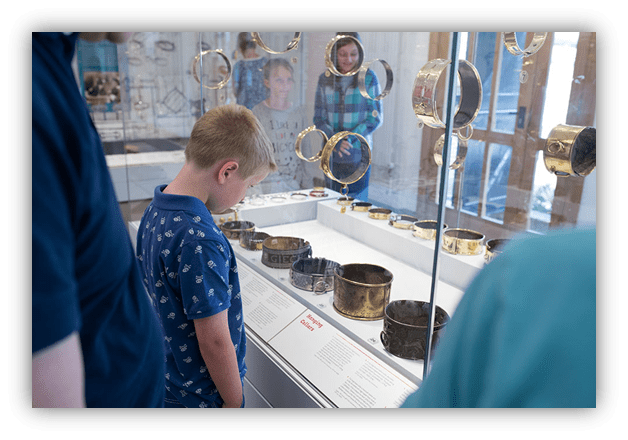
The Dog Collar Museum
Leeds Castle, Kent
Confusing geographical fact: Leeds Castle is not in Leeds. Not even close.
So if its dog collars you’re after, don’t go to Leeds.
Dog collar has two meanings here. There’s the version for the canine that likes to accessorise. Or the colloquial term for the white collar members of the clergy wear.
The Dog Collar Museum deals with the canine variety. Clerical fans are not yet catered for.

The initial collars were donated in the 1970s by a couple from their private collection and have been built on since.
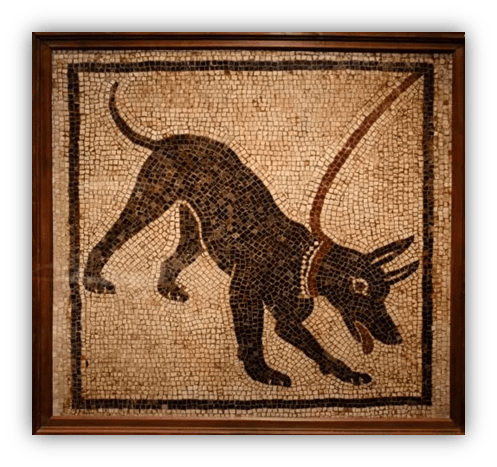
The oldest collar belonging to a Spanish Mastiff, dates to the late 15th Century.
Unfortunately, if Dog Collars are your passion, you do have to pay for entry to the castle as a whole to get to them.
Though that does also get you into the Castle, Bird Of Prey Centre, Maze, Gardens and your choice of three playgrounds.

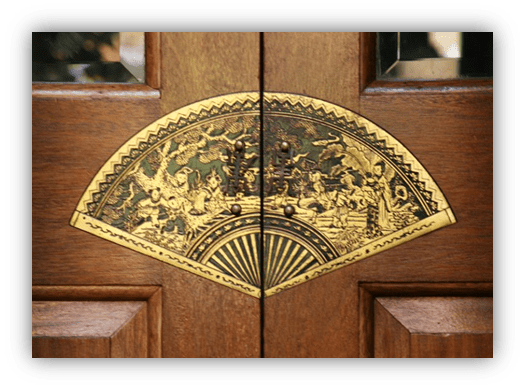
The Fan Museum
London
Not a celebration of stans.
We’re talking about the decorative wafting implement used by ladies to keep their cool in the face of Mr Darcy or to act coy in the face of a potential suitor.

Opened in 1991, it is ‘the only organisation of its kind devoted entirely to the multifaceted history, culture and artistry of the fan.’
Current exhibition offers ‘Fans In The Age Of Jane Austen’. Again, that’s in relation to their depiction in and influence on literature. Not people that really liked her books.
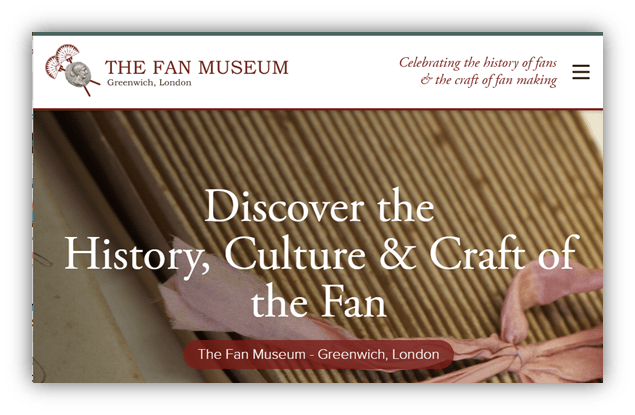
Vagina Museum
London
Reykjavik, Iceland has a Penis Museum. So to bring about equality, the Vagina Museum launched in 2017.
‘founded with the intention of busting the stigma of the gynaecological anatomy and be part of a societal shift from bodily shame to celebration.”

As such, arguably of as much importance to men to go and learn a thing or two.


Crab Museum
Margate, Kent
‘Europe’s first and only museum dedicated to the world of the decapod’
Which suggests there is a Crab Museum on another continent, but I’ve not been able to find it. Maybe they’re just hedging their bets.
Taking a sideways look at all things crab related. It combines humour and science to promote deeper thinking around nature (crabs in particular), the environment and climate change.


Morpeth Chantry Bagpipe Museum
Morpeth, Northumberland
You want Bagpipes? You’ve got options.
One person’s grim caterwauling is another person’s evocative accompaniment to the rugged beauty of the Highlands. What you may not expect is that one of these is in England.
The Morpeth Chantry Bagpipe Museum, originally a 13th Century chapel, is an hour or so south of the border.
Not all bagpipes are created equally. Not all bagpipes are Scottish.

The Northumbrian pipes are smaller and softer in tone. Not so strident. They’re bellows powered so no blowing required. Whatever your preferred method of Piping, both offer the chance to get hands on and learn how to play:
Setting you off on your own journey to becoming the toast of your neighbourhood as everyone within a mile radius gets to listen in on your inexpert wailing.

Sgt Bilko’s Vintage Emporium &
The Phil Silvers Archival Museum
Coventry, West Midlands
The obvious location for “The only Museum in the world dedicated to the life and work of actor and comedian Phil Silvers“.
It’s a two-for-one delight with the vintage emporium specialising in cult film and TV memorabilia alongside the self explanatory Phil Silvers section.

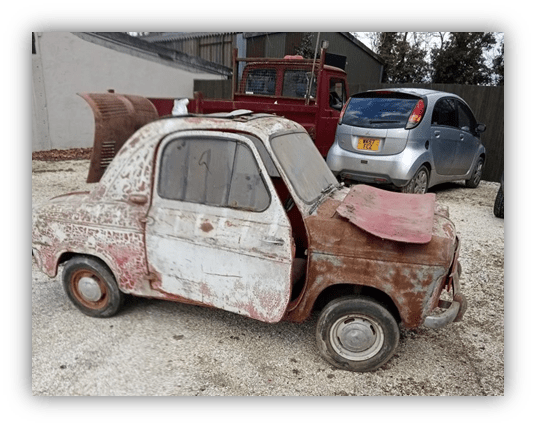
The Bubble Car Museum
Boston, Lincolnshire
The stereotypical view of American cars used to be gas guzzling behemoths the size of a tank.
Meanwhile, on this side of the Atlantic, we had the antithesis of that in the bubble car (or micro car). To qualify as a Bubble car, the engine needs to be less than 700CC. Mostly, they had much less. All the horsepower of a wheezing donkey. The name Bubble Car came from the way they looked.
After WW2 things were bleak. Rationing and austerity were in full flow.

The Bubble Car was a cheap alternative to motoring.
As long as you didn’t have a family or want to actually take that shopping home with you. Then someone invented the Mini as a far more sensible, not quite so micro car. And their day was done.
The Bubble Car Museum preserves over 50 of these cars of yesteryear. As an added bonus its sited on a working farm that also offers camping facilities.


National Poo Museum
Ryde, Isle Of Wight
Unfortunately, The Poo Museum is no more.
At least in its permanent location. The website is still up and running and they’re aiming to take the poo to the people. It’ll take a stronger flush to get rid of this venture.
It may seem in poor taste but this is another one that has a serious message alongside the toilet humour.
Poo is nothing to be ashamed of. We all produce it and as they put it:
“Poo is quite literally everywhere, our planet’s thin organic (living) outer layer is practically made of poo.
Life as we understand it could not exist without the incredible recycling processes that happen through the production of poo every single day.“
The ethos is to; “use quirkiness and family-friendly humour to break through the poo taboo so we can engage, entertain and inform our visitors.”
They’re currently undertaking The People’s Poo Project, a citizen science extravaganza that explores gut health and well being.
You can get involved by taking their survey, linked to on the website, and as it travels round the country you’ll be able to view The People’s Poo Aquarium. Which is exactly what you think it is. A display of floaters donated / produced / expelled by volunteers. It’s even possible that you could see your own poo preserved for posterity.


Morbitorium
Newport, Gwent
With that name, you should know what you’re letting yourself in for.
It describes itself as offering;
“Curios for the curious, oddities for the odd. Oddities museum & witchcraft shop“
Which runs from; “antique lobotomy tools and Victorian sex toys to haunted Ouija boards and mummified cats.“
All good wholesome family fare. Which they emphasise by stating they are ‘Addams family friendly’.


The Coffin Works
Birmingham, West Midlands
More sombre in tone than the Morbitorium, catering to the curious about coffins.
Located in the former premises of the Newman Brothers coffin makers whose work included the fittings for Winston Churchill and Princess Diana’s coffins.
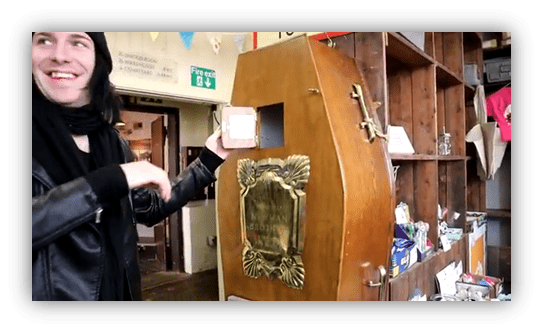
The museum is set in the 1960s, as they say the interior was never really updated after that point so it was ready made for a period piece.

The Hunterian
London
Located at the Royal College of Surgeons, which may give a clue as to what direction this is heading in.
The museum as a whole presents the art and science of surgery from ancient times to the present. One of the main draws is the specimen collection of 18th century surgeon and anatomist; John Hunter.
After whom the museum is named.
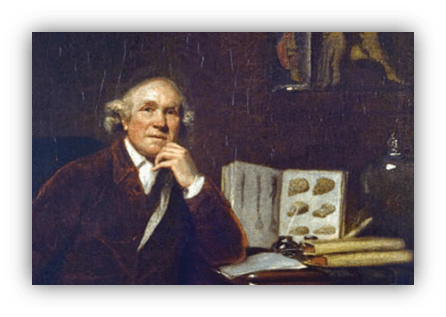
Free to enter. Which may not be incentive enough for those of a delicate disposition.
There are thousands of anatomical, pathological and zoological specimen jars dating back to the 18th century. These contain an extensive range of body parts; human and animal, internal and external, full and in part, healthy and unhealthy.
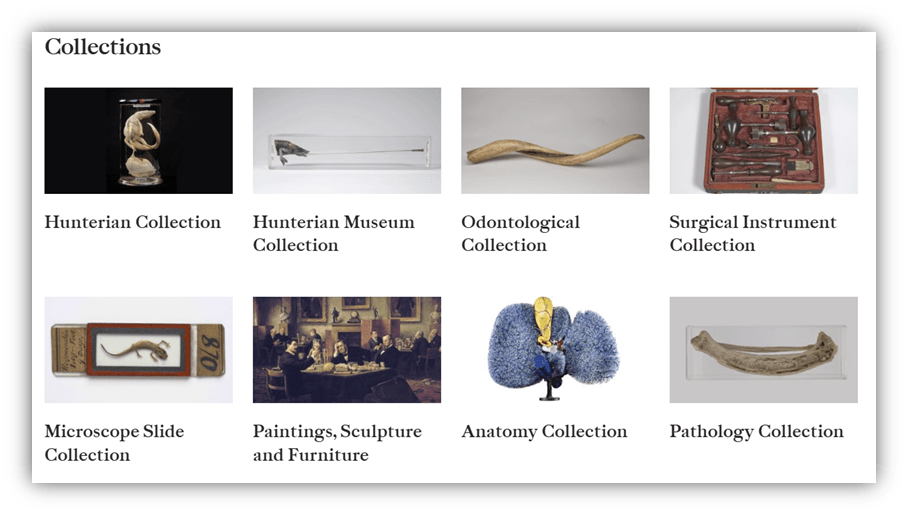
File under: you wouldn’t get away with doing that now but Hunter’s work in the 18th century was groundbreaking in advancing surgery.
Another highlight is the Evelyn Tables.
A set of ‘anatomical preparations’ dating back to 17th century Italy.
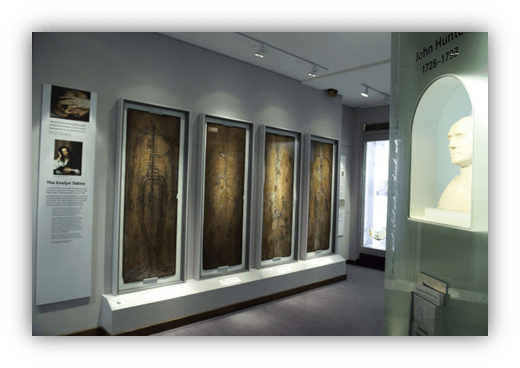
These present actual veins, arteries, spinal cord, nerves and veins taken from a body and arranged on wooden boards.
We visited with our then 12 year-old who found it fascinating. But it must be stressed that this is not for everyone.



